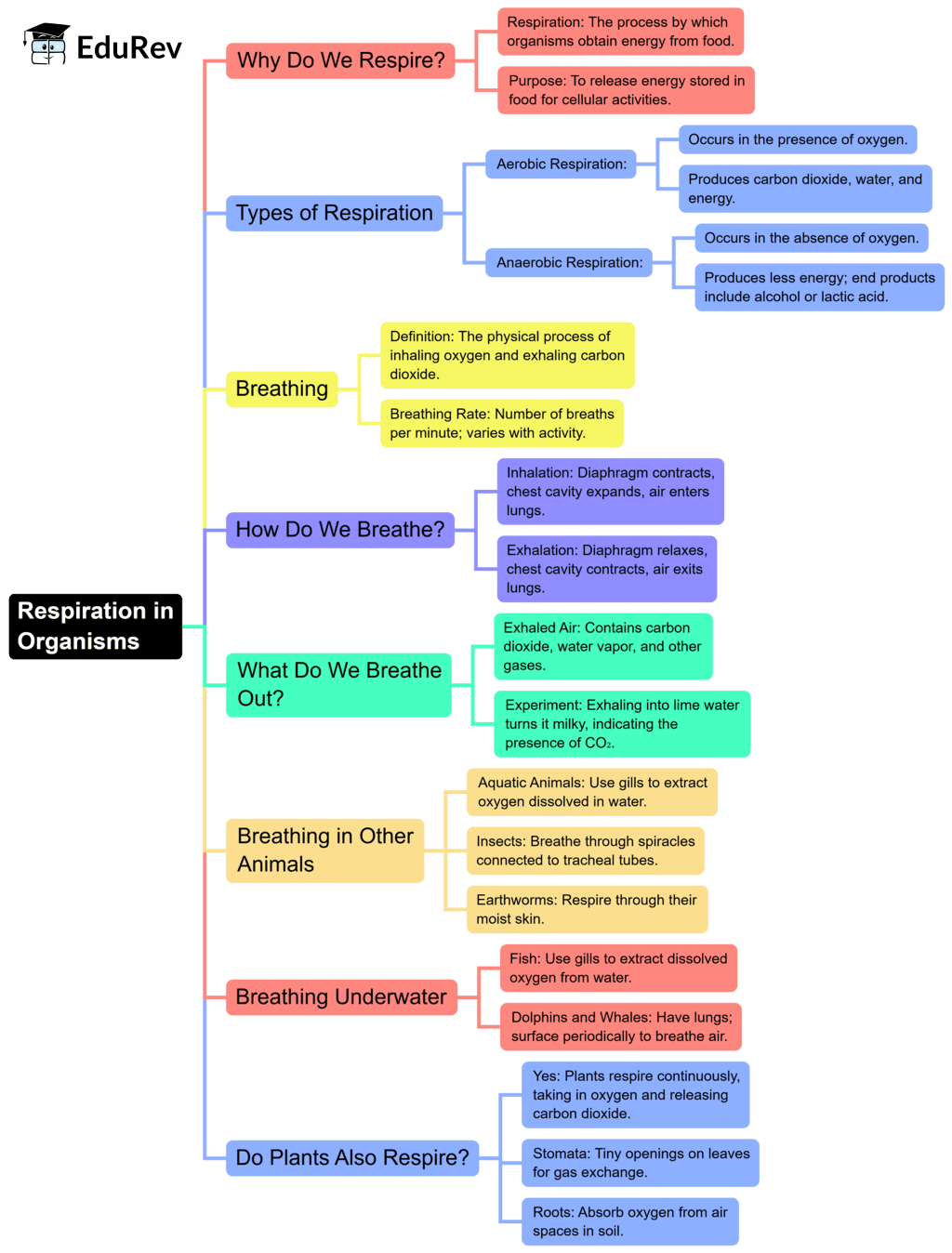Class 7 Exam > Class 7 Notes > Science Class 7 (Old NCERT) > Mind Map: Respiration in Organisms
Mind Map: Respiration in Organisms | Science Class 7 (Old NCERT) PDF Download

The document Mind Map: Respiration in Organisms | Science Class 7 (Old NCERT) is a part of the Class 7 Course Science Class 7 (Old NCERT).
All you need of Class 7 at this link: Class 7
|
111 videos|286 docs|28 tests
|
FAQs on Mind Map: Respiration in Organisms - Science Class 7 (Old NCERT)
| 1. What is the process of respiration in organisms? |  |
Ans.Respiration is a biochemical process through which organisms convert food into energy. It involves the intake of oxygen and the release of carbon dioxide. In aerobic respiration, oxygen is used to break down glucose, producing carbon dioxide, water, and energy in the form of ATP (adenosine triphosphate). Anaerobic respiration occurs without oxygen and results in byproducts such as lactic acid or ethanol, depending on the organism.
| 2. How do different organisms perform respiration? |  |
Ans.Different organisms have evolved various methods of respiration. For example, mammals and birds use lungs for gas exchange, while fish utilize gills to extract oxygen from water. Plants perform respiration through stomata, where they exchange gases with the environment. Some microorganisms, like certain bacteria, may rely on anaerobic respiration, utilizing substances other than oxygen for energy production.
| 3. What are the main types of respiration? |  |
Ans.The main types of respiration are aerobic and anaerobic respiration. Aerobic respiration requires oxygen and produces more energy (approximately 36-38 ATP molecules from one glucose molecule) compared to anaerobic respiration, which occurs in the absence of oxygen and yields less energy (2 ATP molecules per glucose). Anaerobic respiration can lead to fermentation, which produces ethanol in yeast or lactic acid in muscles.
| 4. What role does respiration play in the ecosystem? |  |
Ans.Respiration plays a crucial role in the ecosystem by maintaining the balance of oxygen and carbon dioxide in the atmosphere. Through respiration, organisms release carbon dioxide, which plants utilize in photosynthesis to produce oxygen. This interdependence supports life on Earth, as it ensures a continuous supply of energy and nutrients within various food chains and ecological cycles.
| 5. How is respiration measured in organisms? |  |
Ans.Respiration can be measured through various methods, including the assessment of oxygen consumption or carbon dioxide production. In laboratory settings, respirometers are used to quantify the rate of respiration by measuring changes in gas concentrations over time. Additionally, metabolic rate can be determined by calculating the amount of energy expended during respiration, often expressed in calories or joules.
Related Searches
















